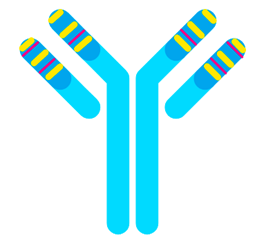Immunotherapy for Neuroblastoma and Ewing Sarcoma
University of Pittsburgh, Children’s Hospital of Philadelphia, and Texas Tech University Health Sciences Center researchers have developed a humanized mouse antibody capable of binding to the cell surface receptor GDNF family receptor alpha 2 (GFRA2). These neurotrophic factors are highly expressed in the majority of neuroblastoma (NB) and Ewing sarcoma (ES) tumors and cell lines with a correlation between GFRA2 expression and poor prognosis. The development of antibodies that can specifically bind to GFRA2 could lead to targeted therapies including antibody drug conjugates (ADCs), chimeric antigen receptor (CAR T), and bispecific antibody therapy to treat patients with NB or ES.

Description
GFRA2 is present on the surface of cells and a receptor for neurturin (NRTN). Binding of NRTN to GFRA2 initiates a downstream signaling cascade promoting neuroblastoma cell survival and proliferation. As a result, GFRA2 is a novel selective therapeutic target for NB and ES. Selective targeting of cancer cells can lead to less toxic therapies by reducing the risk of off-target effects. These antibodies can be used to develop a variety of precision therapies for pediatric cancers including CAR T cell and ADC-based approaches.Applications
• Neuroblastoma• Ewing sarcoma
• Other GFRA2 positive cancers
Advantages
Immunotherapy has revolutionized cancer treatment. However, many childhood cancers including NB and ES are resistant to immunotherapy and there is a pressing need to develop novel therapies for these vulnerable patients.These novel GFRA2 antibodies can selectively target GFRA2 found on the surface of NB and ES cells, circumventing resistance to existing immunotherapies. These antibodies may also have a role in diagnosis of NB and ES through the development of assays to detect GFRA2 positive cancers. Additionally, these novel antibodies could be labelled (e.g., fluorescently labelled) to enable better imaging of ES and NB tumors for surgical removal, patient monitoring, or to assist treatment decisions.
